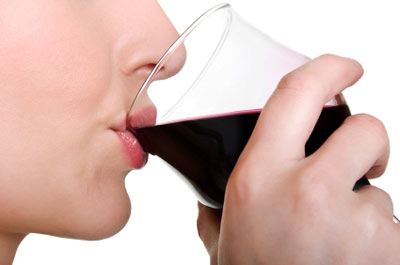
However, even such light drinking is a little risky, say the authors.
A significant increase of the order of 4% in the risk of breast cancer is already present at intakes of up to one alcoholic drink/day, write the authors, led by Helmut K. Seitz, PhD, from the Centre of Alcohol Research at the University of Heidelberg in Germany.
This comment refers to the finding that the relative risk (RR) for breast cancer in light drinkers versus nondrinkers in the 113 studies was 1.04 (95% confidence interval [CI], 1.02 - 1.07).
This is a "modest but significant association between light drinking and breast cancer," the authors write in their paper, published online March 28 in Alcohol and Alcoholism.
In other words, drink at your own risk, they suggest. The definition of light drinking in the new analysis was no more than 12.5 g of ethanol per day or 1 drink per day or less. For women at elevated risk for breast cancer, the authors are clearer and more authoritative in their advice: Such women "should avoid alcohol or consume alcohol occasionally only. Overall, up to 1% to 2% of breast cancers in Europe and North America are "attributable to light drinking alone," the authors estimate. Just exactly how alcohol increases breast cancer risk is not certain, said an expert not associated with the study.
The new article focuses on the effects of light drinking and shows that even light drinking can increase breast cancer risk. But she continued: "The mechanisms involved are not clearly established and can be diverse." "Synergistic effects with other carcinogenic agents must be evaluated" because alcohol drinking — even light drinking — "can be very prevalent in certain populations and countries.
The new paper also commented on biological mechanisms that may be at work in this relationship. They cite the oft-mentioned findings that alcohol increases estrogen levels, and estrogens may exert a carcinogenic effect on breast tissue. Other potential mechanisms may include the effects of acetaldehyde, oxidative stress, epigenetic changes, and "decreased retinoic acid concentrations associated with an altered cell cycle.